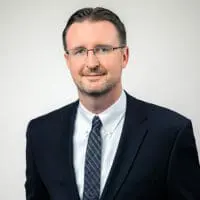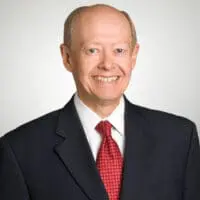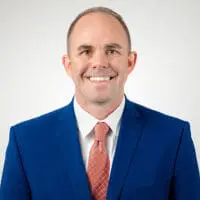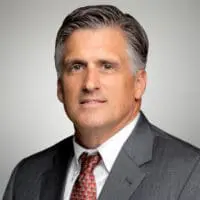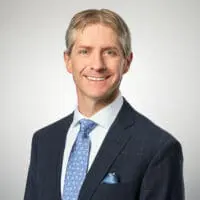Publication
Federal Reserve Expands Main Street Lending Program; New Affiliate Rules May Impact Some Borrowers
By Eric Kintner, Todd V. Jones, Chris Fahrendorf, Victor Roehm and Dave Sprentall
On April 30, the U.S. Federal Reserve provided updated terms for the $600 billion Main Street Lending Program (Main Street Program), which will now operate through three facilities: the Main Street New Loan Facility (MSNLF), the Main Street Priority Loan Facility (MSPLF) and the Main Street Expanded Loan Facility (MSELF). While Main Street Program loans are not forgivable like the Paycheck Protection Program (PPP) loans, the Federal Reserve adopted very similar affiliation, employee and revenue counting rules applicable to PPP loans. Below is an outline of the key terms for the Main Street Program.
What are the key differences between the MSNLP, MSPLF and MSELF?
All three facilities use the same eligible lender and eligible borrower criteria, and have many of the same features, including the same maturity (four years), interest rate (adjusted LIBOR (one or three-month) plus 300 basis points), deferral of principal and interest for one year and ability of the borrower to prepay without penalty.
Other features of the loans extended in connection with each facility differ, including how they interact with the eligible borrower’s existing debt. Below are some key differences in the loan types:
MSNLF
- New loans ranging in size from $500,000 to $25 million.
- The maximum size of an MSNLF loan cannot, when added to the borrower’s existing outstanding and undrawn available debt, exceed fours times the borrower’s adjusted 2019 EBITDA.
- The MSNLF loan must not be, at the time of origination or at any time during the loan term, contractually subordinated in terms of priority to any of the borrower’s other loans or debt instruments.
- Amortized 1/3 at the end of each year commencing with the second year.
MSPLF
- New loans ranging in size from $500,000 to $25 million.
- The maximum size of an MSPLF loan cannot, when added to the borrower’s existing outstanding and undrawn available debt, exceed six times the borrower’s adjusted 2019 EBITDA.
- The MSPLF loan, at the time of origination and at all times thereafter, must be senior to or pari passu with, in terms of priority and security, the borrower’s other loans or debt instruments, other than mortgage debt.
- Borrowers may, at the time of origination of the MSPLF loan, refinance existing debt owed by the borrower to a lender that is not the MSPLF lender.
- Amortized 15% at the end of the second year, 15% at the end of the third year and 70% at the end of the fourth year.
MSELF
- Increased or “upsized” tranches of existing term loan or revolving credit facility.
- The upsized tranche is a four-year term loan ranging in size from $10 million to $200 million.
- The maximum size of an MSELF loan cannot exceed (i) 35% of the borrower’s existing outstanding and undrawn available debt that is pari passu in priority with the MSELF loan and equivalent in secured status (i.e., secured or unsecured); or (ii) when added to the borrower’s existing outstanding and undrawn available debt, six times the borrower’s adjusted 2019 EBITDA.
- MSELF’s upsized tranche, at the time of upsizing and at all times thereafter, must be senior to or pari passu with, in terms of priority and security, the borrower’s other loans or debt instruments, other than mortgage debt.
- Amortized 15% at the end of the second year, 15% at the end of the third year and 70% at the end of the fourth year.
Who are “eligible borrowers”?
The borrower criteria are the same across all three facilities.
- The eligible borrower’s business must have been established prior to March 13, 2020 under United States federal, territorial, tribal or state laws with significant operations in and a majority of its employees based in the United States.
- The business must not be an “ineligible business," which includes most of the same ineligible businesses for the PPP. However, the Federal Reserve has indicated that they intend to create a separate program for nonprofit organizations.
- The business must meet at least one of the following two conditions: (i) 15,000 employees or fewer, or (b) had 2019 annual revenues of $5 billion or less. To determine employees or revenues, the business must be aggregated with the employees and revenues of its affiliated entities.
- The business may only participate in one of the Main Street facilities (MSNLF, MSPLF or MSELF).
- The business may not participate in the Federal Reserve’s “Primary Market Corporate Credit Facility” for larger companies, or have received the payroll support loans under Section 4003(b)(1)-(3) of the CARES Act. However, the business or its affiliates may have received PPP loans.
Who are “eligible lenders”?
The lender criteria are the same across all facilities. An eligible lender includes any U.S. federally insured depository institution (including a bank, savings association or credit union), a U.S. branch or agency of a foreign bank, a U.S. bank holding company, a U.S. savings and loan holding company, a U.S. intermediate holding company of a foreign banking organization or a U.S. subsidiary of any of the foregoing.
What are the affiliate rules?
To determine eligibility, a borrower’s employees and 2019 revenues should be calculated by aggregating the borrower’s own employees and 2019 revenues along with those of its “affiliates.” The Main Street Program adopted the same affiliation rules applicable to PPP loan borrowers under 13 C.F.R. 121.301(f). These affiliation rules generally define an affiliate as any individual or entity that controls or is controlled by the borrower. There are no exceptions for restaurant and hospitality companies.
How does a borrower calculate employees for purposes of eligibility?
The borrower should count all of the borrower’s employees as well as all of the employees of its affiliates (whether domestic or foreign). Employees include all full-time, part-time, seasonal or otherwise employed persons, excluding volunteers and independent contractors. Borrowers should use the average of the total number of persons employed by borrower and its affiliates for each pay period over the 12 months prior to the origination or upsizing of the loan under the Main Street Program.
How does a borrower calculate 2019 revenue?
Borrowers may use one of the following methods to calculate 2019 annual revenues for purposes of determining eligibility:
- Borrower’s (and its affiliates’) annual revenue per its 2019 GAAP audited financial statements; or
- Borrower’s (and its affiliates’) annual receipts for the fiscal year 2019, as reported to the IRS, with receipts defined as the same “total income” used under PPP and other SBA loan programs.
Are there eligible borrower loan covenants and restrictions?
The same restrictions that apply to compensation, stock repurchase and capital distribution with respect to direct loan programs under Section 4003(c)(3)(A)(ii) of the CARES Act apply under the MSNLP, MSPLF and MSELF except with respect to restrictions on dividends and other capital distributions to cover owners’ tax obligations with respect to the entity’s earnings with respect to S corporations and other tax pass-through entities.
With respect to borrowers obtaining MSNLF and MSELF loans, the borrower must commit to refrain from repaying principal and interest on any debt, other than that which is mandatory and due, until the MSNLF loan or MSELF upsized tranche is paid in full. Borrowers under the MSNLF and MSELF programs must also commit that they will not seek to cancel or reduce committed lines of credit with any lender. MSPLF borrowers must agree to similar restrictions, provided that they may, at the time of the origination of the MSPLF loan, refinance existing debt owed to a lender other than the MSPLF lender.
A borrower must certify that it has a reasonable basis to believe that, as of the date of the origination of the loan, it has the ability to meet its financial obligations for at least the next 90 days and does not expect to file for bankruptcy within the next 90 days.
How will the Reserve Bank’s “Special Purpose Vehicle” support the loans made by eligible lenders?
For MSNLF, the SPV will purchase 95% participation in loans from eligible lenders and eligible lenders would retain 5% of each loan. For MSPLF, the SPV will purchase 85% participations in loans from eligible lenders and eligible lenders will retain 15% of each loan. For MSELF, the SPV will purchase 95% of the upsize tranche of the loans from eligible lenders, and eligible lenders would retain 5% of the upsize tranche of the loans. The Treasury Department will make a $75 billion equity investment in the single common SPV in connection with the Main Street Program.
When does the Main Street Program terminate?
The SPV will cease purchasing participations in eligible loans on September 30, 2020, unless the Federal Reserve Board and the Treasury Department extend the facilities. The Reserve Bank will continue to fund the SPV after such date until the SPV’s underlying assets mature or are sold.
About Snell & Wilmer
Founded in 1938, Snell & Wilmer is a full-service business law firm with more than 500 attorneys practicing in 17 locations throughout the United States and in Mexico, including Los Angeles, Orange County, Palo Alto and San Diego, California; Phoenix and Tucson, Arizona; Denver, Colorado; Washington, D.C.; Boise, Idaho; Las Vegas and Reno, Nevada; Albuquerque, New Mexico; Portland, Oregon; Dallas, Texas; Salt Lake City, Utah; Seattle, Washington; and Los Cabos, Mexico. The firm represents clients ranging from large, publicly traded corporations to small businesses, individuals and entrepreneurs. For more information, visit swlaw.com.
